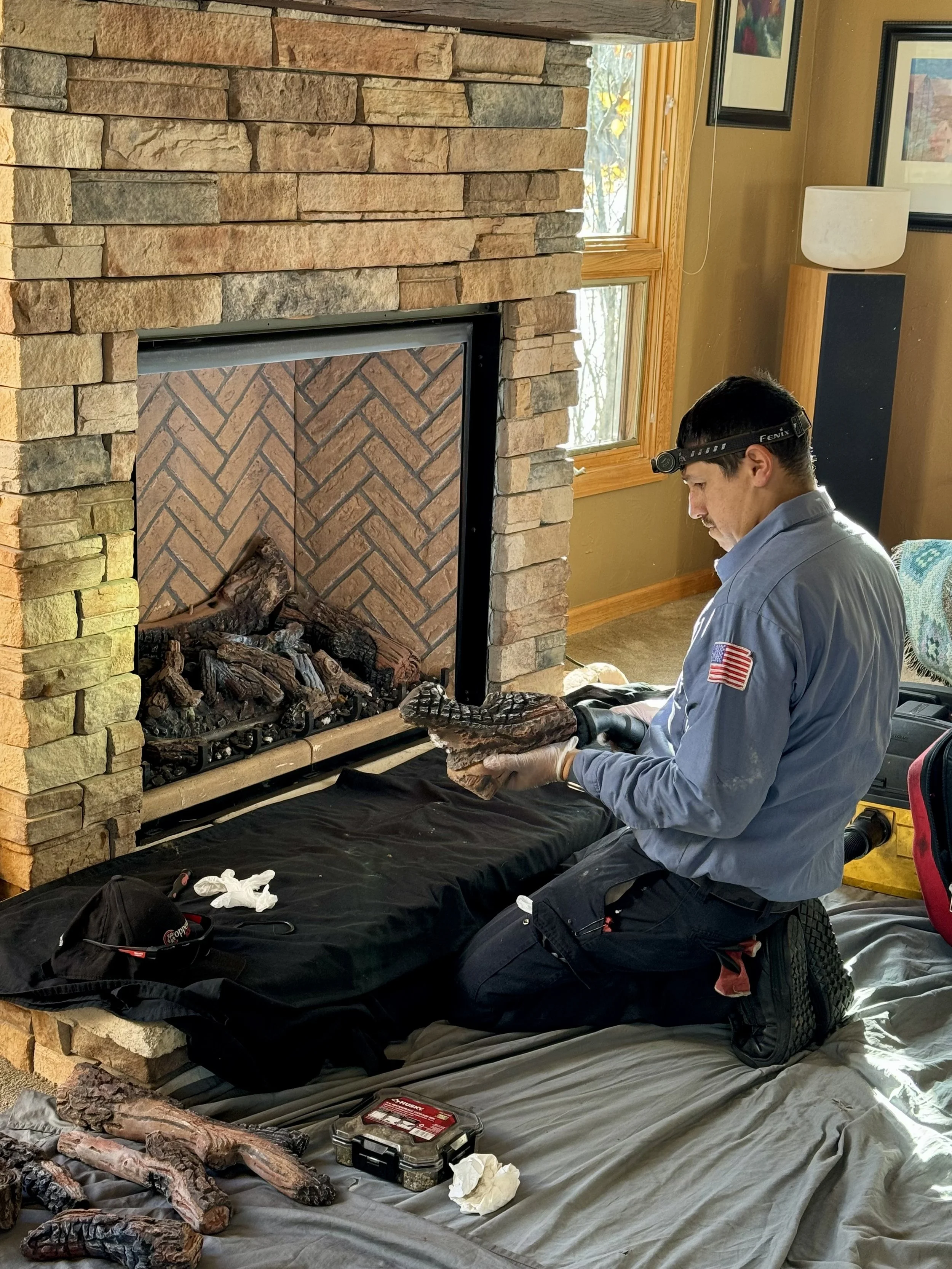Winter is the last thing on anyone’s mind when we’re out enjoying our spectacular Colorado summer. But as we know from experience, winter’s right around the corner. At first, maybe just for a day or two with a deep freeze and a few flurries before several more months of the best fall weather anywhere… and then winter hits HARD.
Summer flies by like a bullet train but in late summer, everywhere you look, Nature is already preparing for winter. Squirrels are hoarding nuts, bears are doing bear things to put on weight, plants are sending energy down to their roots, and migratory birds are heading south.
What about your home? One of the most important winterizing projects is making sure that your home will have heat. Whatever your primary heating system is, make sure it’s working now, not during the first freeze.
The same goes for secondary heat sources such as fireplaces. Wood and gas-burning fireplaces can be used for heat in the event of a power outage, and bring plenty of supplemental heat to primary living spaces.
At our office, the first freeze comes with a flurry of requests for service for fireplaces that have sat idle for months. Suddenly, when you need it, a gas fireplace won’t light or won’t stay lit, or a wood stove spews smoke into the living room.
This is your gentle reminder: don’t put off fireplace service until you need it. Don’t suffer with a freezing house while you’re in the service queue during our busy season!
Here’s how to get ready for winter now:
If you have a gas fireplace, insert, or stove:
Schedule service now since time and use affect safety and performance. Our comprehensive gas fireplace service includes cleaning and checking the voltage of the components inside the fireplace including the pilot assembly, checking for gas leaks, cleaning the logs and the glass, and fine-tuning the flame height and appearance.
If you have a wood fireplace, insert, or stove:
Schedule service now to have the firebox and chimney thoroughly cleaned and inspected. Don’t be a statistic (there are 25,000 chimney fires every year in the USA)! Many chimney fires occur in the beginning and end of fireplace season when fires are more sporadic and people tend to make BIG fires that ignite whatever creosote and debris might be in the chimney. Be safe!
An inspection will also help identify water leaks at the chimney/roof interface, and ensure that your chimney has a functioning chimney cap and that the entire chimney is in good condition.
We’re one of the very few chimney sweeping companies who actually get up on the roof to give your chimney a thorough cleaning and inspection!
Another safety concern in aging wood stoves is the integrity of the stove door or window gasket, the flexible rope seal around the door which creates an airtight seal around the door and glass which prevents extra air from entering the firebox. If that seal is missing, you could end up overheating and damaging your stove. This is one of those “out of sight out of mind” things. Stove gasket that needs replacing won’t necessarily be obvious if the door still closes! Stove gasket is perishable. It breaks down over time, and becomes compressed to the point it no longer creates a tight seal. As part of our full cleaning and inspection, we will note any damaged stove gasket, and we even offer replacement services or gaskets for sale in our showroom for your convenience.
Cleaning your chimney and firebox also helps with efficiency. It makes sense to burn less wood and get more heat. Cleaning your fireplace is step #1. For example, we’ll clean out soot that interferes with airflow.
And yes, it’s time to stock up on firewood! Check out the Sylvan Cycle website (https://www.sylvancycle.com/) for community listings for cheap and free firewood as well as local fire mitigation resources!
If you have a pellet stove:
We know we sound like a broken record… but schedule service now! We thoroughly clean and inspect the pellet stove, including the firebox, heat exchanger, hopper, burn pot, venting, electrical components. We also inspect the chimney and clean the glass. Though they look low-maintenance, pellet stoves require regular maintenance for safety and performance — and most homeowners don’t service their pellet stoves often enough and may miss some of the complexities of optimizing performance. That’s what we’re here for!
This is also a good time to think about pellet storage. Pellets must be stored off the ground, away from moisture since damp pellets burn poorly and clog the hopper. We get several calls every year from customers whose pellet stoves aren’t burning efficiently, and sometimes it’s because pellets have gone bad from moisture. Ideal pellet storage is indoors, off the floor on a pallet. You can also use a clean, dry, air-tight plastic container to store leftover pellets.
If you have an open wood-burning fireplace:
If your open fireplace makes the room feel deathly cold and sends heat up the chimney and smoke into the room, upgrade to a wood- or gas-burning insert that uses the existing fire box. It’s a wise investment in efficient heat and aesthetics. An insert will lower your heating bills and make a formerly uncomfortable room the coziest spot in the house!
A gentle time-sensitive nudge:
The IRS Biomass Tax Credit can save you up to $2,000 on the purchase, installation and venting for any EPA-Certified wood-burning fireplace, stove, or insert. This credit is being eliminated and will only apply to installations completed by 12/31/25.
Winter is right around the corner so it’s time to take a tip from Nature and get ready now. Call us at 303-679-1601 for sales and service today!
And then, say to Mother Nature… BRING ON WINTER!






